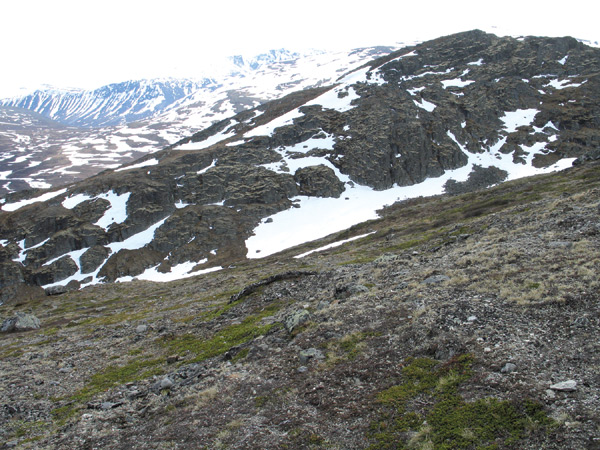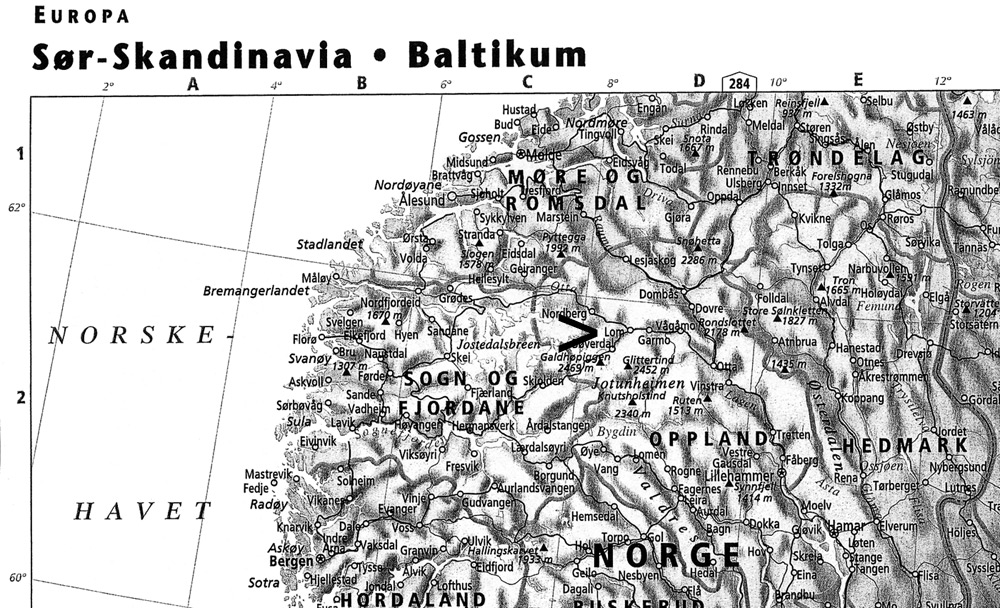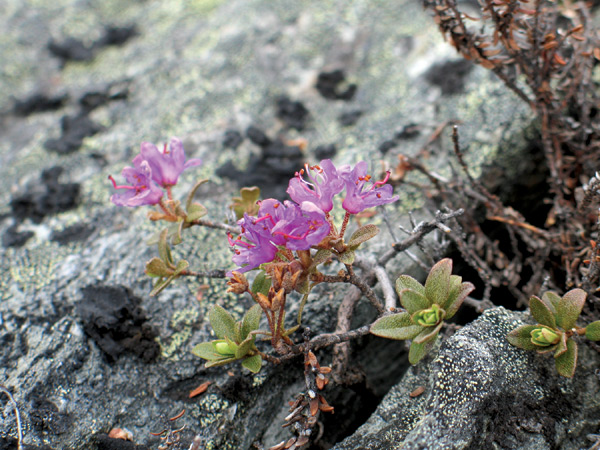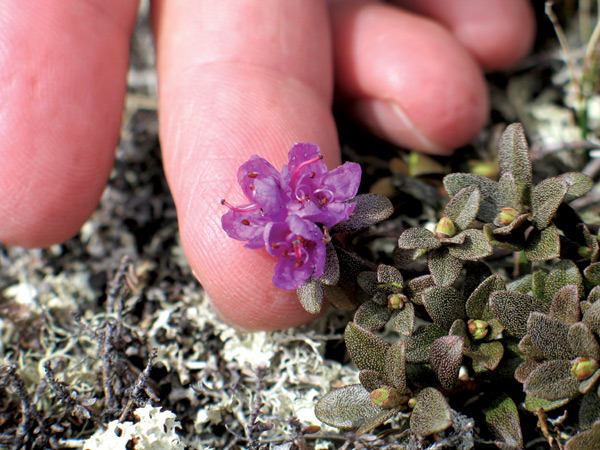JARS v60n3 - Rhododendron Hunting on the Top of Europe
Rhododendron Hunting on the Top of Europe
Ole Jonny Larsen
Ålesund, Norway
Would you drive your car for ten hours to see a 5 cm (2 in.) plant? Most people would find that crazy but for real rhodoholics it is just pure pleasure. All you need is enthusiasm and a good local guide.
Rhododendron lapponicum , the Lapland rhododendron, is distributed all over the Arctic parts of the northern hemisphere where the growing conditions are correct. You can find it in Russia, Alaska, Canada and in Greenland. Even in Japan and Korea this species can be found. Some collectors grow R. lapponicum in their gardens, normally forms from Hokkaido, Japan, from Siberia or from Canada. These are more or less tall growing forms, up to 1 meter (3.3 ft.). They are all early flowering. In Norway where I live, most collectors have one or two different clones of R. lapponicum . But no one grows the native form of the species. The Norwegian alpine form of the R. lapponicum is considered impossible to grow in lowland conditions. It will simply die from a heat stroke!

|
|
Landscape near the village of
Lom, Norway, where
R. lapponicum
grows.
Photo by Ole Jonny Larsen |
In the high mountains in Scandinavia a very alpine creeping form of Rhododendron lapponicum can be found. It is a famous plant from floral literature, but few people, even among rhododendron enthusiasts, have actually seen it. And the reasons are obvious: the plant is very small and extremely difficult to find. Without a local guide only sheer luck can lead you to the plant, even if you search the growing area very closely for hours. It flowers just after the snow melts away, normally late May or early June. This is unfortunately a few weeks before the tracking season starts in the Norwegian mountains. When walkers enter the mountains in summer, the flowering is over. The small flowers only last a week or two, and out of flower it is almost impossible to spot. So this is like finding the famous needle in the haystack.

|
| Figure 1. Map of Norway showing the position of Lom, the village near where R. lapponicum grows. |
I have been talking to rhododendron people from several European countries. They always ask me about the Norwegian native Rhododendron lapponicum , and ashamed I have had to admit that I had never seen it, although I have nearly 400 other species of rhododendrons in my garden from all over the world. As a serious rhododendron man I came to a point when I realized this could not go on. So in early spring 2005 I gathered some of my best rhododendron friends to plan The Rhododendron lapponicum 2005 Expedition. After some searching we came in touch with Mr. Kristian Venås, a very experienced local guide who for more than twenty years had led generations of botany students into the high mountains near the beautiful village Lom to find alpine plants. The mountains around Lom are partly built by limestone, which is quite unusual in Norway. Thanks to this fact the local flora is very different from other parts of Norwegian mountains, and the R. lapponicum is also, unlike most rhododendrons, a typical chalk lover. The plant is in every way very specialised. To establish well it also needs full sun, but cool and wet roots, not the most usual conditions, which narrows the distribution.

|

|
|
|
R. lapponicum
Photo by Ole Jonny Larsen |
R. lapponicum
Photo by Ole Jonny Larsen |
Mr. Venås took us up to 1000 meters (3,300 ft.) by car. From there he led the track up to around 1500 meters (5,000 ft.). He turned out to be a very fit and experienced walker. His 74 years of age did not seem to bother him at all. After weeks of rainy and cold weather this day turned out to be sunny and warm. In spite of the high altitude, the sweaters were taken off and most of the day was spent in just a T-shirt. So now the weather was perfect, but would we find the plants? And would they be in flower?
When we entered the area where Venås expected to find the Rhododendron lapponicum , he ordered us to spread out and start searching upwards a south-facing mountainside. Eager to see the plant for the first time, we obeyed without a word. After ten minutes no rhododendrons were found. Mr. Venås ordered a new search a little higher and to the left of the first area. Still no plants were found. A certain anxiousness started to grow. Was our guide's reputation too good? Or was the flower season over and the whole trip in vain? New areas were examined and fewer and fewer words were uttered. The guide seemed a little stressed, and we were on the point of giving up when we suddenly saw them: R. lapponicum flowering beautifully right in front of us! "Ground diving" must be the right words. In seconds we were on four legs, changing between digital and traditional cameras like mad. To see a real rhododendron in a Norwegian mountain was a fantastic experience. The plants were creeping only centimetres above ground level. Looking closely one could see that some of them were old specimens. The age is impossible to guess, but with a growing season only lasting some three months, the annual growth must be measured in millimetres. Most of the plants' growing potential must be spent to flower and develop seeds before frost and snow occurs in late September.
After the first flowers were found, hundreds turned up. Now we saw the Rhododendron lapponicum everywhere! We spent a few hours on the ridge and took lots of photographs. Other nice high altitude plants were also found, but no one could rival the one we came to see in the first place. This was definitely the R. lapponicum day. We had a five-hour drive home ahead of us to get home, but no one cared. We had finally seen the native Rhododendron lapponicum .

|
|
Knut Grebstad, Trond Jordal
and the local guide, Kristian Venås.
Photo by Ole Jonny Larsen |
(Until a few years ago, botanists claimed that in Norway only one Rhododendron species was growing in the wild, the Rhododendron lapponicum , in Norwegian called the Lapprose. But after the Ledum group was included in the genus Rhododendron , we have two native species. Ledum palustre , now Rhododendron tomentosum , is the second species.)
Mr. Larsen is a member of the Danish Chapter.
